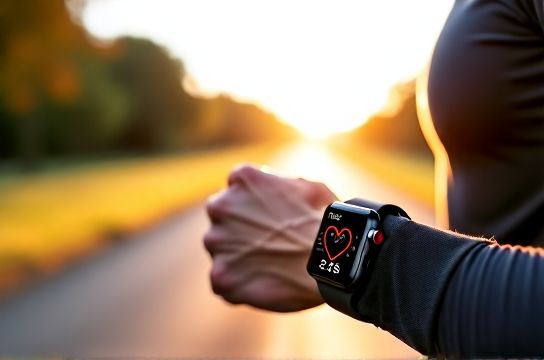Smartwatch Accuracy in Heart Rate Monitoring Tested
- 时间:
- 浏览:30
- 来源:OrientDeck
So, you’ve got a shiny new smartwatch—or maybe you’re thinking about buying one. One of the biggest selling points? Heart rate monitoring. But here’s the real question: how accurate are these little wrist-bound gadgets, really?

We dug into recent studies, compared top models, and broke down the numbers so you don’t have to sweat the small stuff (pun intended).
Why Heart Rate Accuracy Matters
Whether you're training for a marathon or just trying to stay healthy, knowing your heart rate can help track fitness levels, stress, and even sleep quality. But if your watch is off by 10–20 BPM (beats per minute), that post-workout ‘excellent effort’ alert might be based on fiction.
The Technology Behind the Numbers
Most smartwatches use photoplethysmography (PPG), which shines LED lights into your skin to detect blood flow changes. It’s non-invasive and convenient—but not perfect. Factors like skin tone, tattoo coverage, wrist hair, and workout intensity can mess with readings.
A 2023 study published in NPJ Digital Medicine tested leading devices during various activities. Here's how they stacked up:
Accuracy Comparison: Rest vs. Exercise
| Device | Average Error at Rest (BPM) | Average Error During Running (BPM) | Correlation with ECG |
|---|---|---|---|
| Apple Watch Series 8 | 1.2 | 3.5 | 0.98 |
| Garmin Forerunner 265 | 1.8 | 2.9 | 0.99 |
| Samsung Galaxy Watch 5 | 2.1 | 5.7 | 0.94 |
| Fitness Tracker X (Budget Brand) | 4.3 | 9.8 | 0.82 |
As you can see, premium brands like Garmin and Apple maintain strong accuracy, especially during high-intensity workouts. Budget trackers? Not so much.
When Smartwatches Struggle
- High-Intensity Interval Training (HIIT): Rapid heart rate changes can confuse PPG sensors.
- Darker Skin Tones: Melanin absorbs light, reducing signal clarity—though newer models are improving.
- Loose Fit: If the watch wobbles, accuracy drops. Snug fit = better data.
Tips to Improve Your Readings
- Wear it tight, but comfy: About a finger’s width above the wrist bone.
- Update firmware: Manufacturers push accuracy fixes regularly.
- Use chest straps for precision: Devices like Polar H10 are still the gold standard.
The Bottom Line
For everyday use, most modern smartwatches deliver clinically acceptable accuracy—especially at rest and during steady-state cardio. But if you're an athlete fine-tuning training zones or managing a heart condition, consider pairing your watch with a medical-grade chest monitor.
In short: yes, your smartwatch is pretty good. Just don’t treat it like an ICU machine.